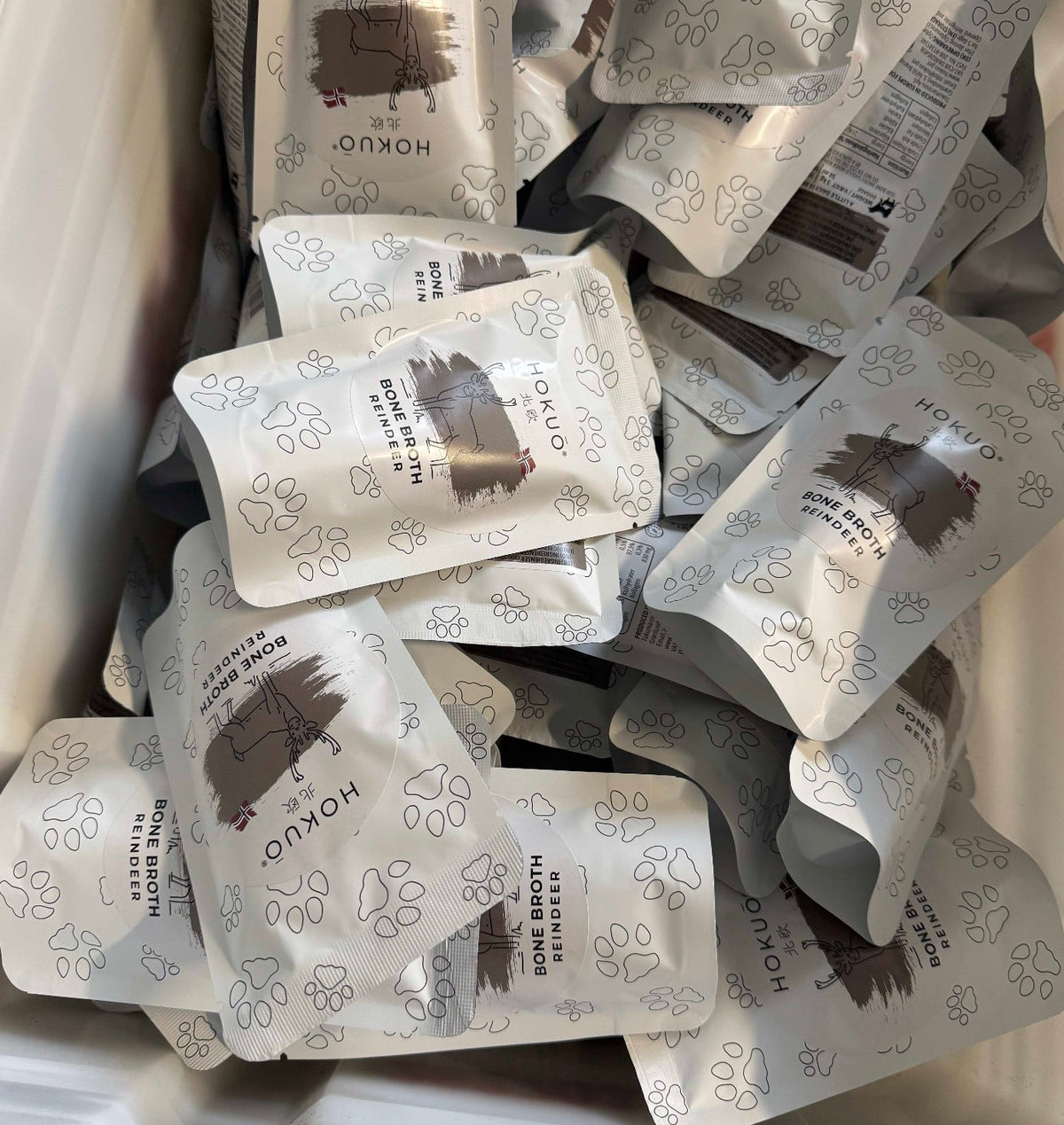
Bone Broth for Dogs and Cats: Liquid vs Dehydrated?
|
Time to read 4 min
|
Time to read 4 min
Bone broth has been passed down through generations for a reason. When made properly, it's not just a warm liquid with flavour — it's an extraction. A careful process of low-simmering bones and connective tissue over time, to draw out the nutrients the body can absorb and use. For pets, it can be a powerful addition to their diet. But as with anything: not all bone broths are made equally.
True bone broth takes time. It’s simmered slowly, often over 12 to 24 hours, to allow for a deep release of amino acids, collagen, and minerals from the bones. The difference between this and a quick-cooked stock is more than just taste. Shorter cooking times extract some flavour, but not the nutrients your pet’s body needs. These fast versions are closer to flavoured water than real bone broth. If it’s done too fast, with the wrong bones, or without proper preparation — it may smell nice, but it won't carry the benefits.
Many people associate a good bone broth with how gelatinous it becomes after cooling. While gelatin is a sign of natural collagen being extracted, it’s not the only marker of a well-made bone broth. The amount of gelatin depends on the type and part of the bone:
Some bones are rich in collagen, others in amino acids or key minerals. That’s why we use a blend of different bones — it creates a more balanced and nutritionally complete bone broth for dogs and cats. What matters most is how the bones are treated — not just in the pot, but how the animals lived.
We choose wild and free-range animals because you can taste and see the difference in the bones.
A bone broth is only as good as what it comes from. And we only use bones from animals that lived the life they were meant to.
We don’t use off-cuts, by-products, or category 3 materials. Only bones and ingredients that are fully human-grade — from sourcing and transport to processing. This gives us full control over quality and transparency, and gives your pet a product you can feel confident about.
With more dehydrated bone broths for dogs and cats appearing on the market, it’s easy to wonder: which is better? Dehydrated bone broth is typically made by heat-drying already-cooked bone broth or by extracting nutrients using high temperatures and spray-drying. These methods make it convenient and shelf-stable — but not without trade-offs.
In contrast, liquid bone broth is slow-simmered from the start.
To keep it safe without preservatives, we use a short steam-based method called autoclaving. It gently steam pressure to remove bacteria — making the bone broth shelf-stable, without compromising its natural flavour or nutrients.
For pets, that means:
Nutritional Benefits: A Deeper Dive
Want to understand what bone broth actually does for your pet? Read our in-depth guide written in collaboration with a certified pet nutritionist here . From gut support and joint health to immune function and hydration, real bone broth supports it all.
Dehydrated bone broth is often praised for convenience — but it’s not the only option. Our bone broths are available in both 400ml and 100ml pouches. The 100ml size is perfect for travel, enrichment, or freezing — so you can bring real bone broth with you anywhere.
At Hokuō®, we honour the process — and your pet. Every batch is made with traceable, human-grade ingredients, sourced within Europe, and slow-simmered in small batches. Because better bone broth starts with better bones.
